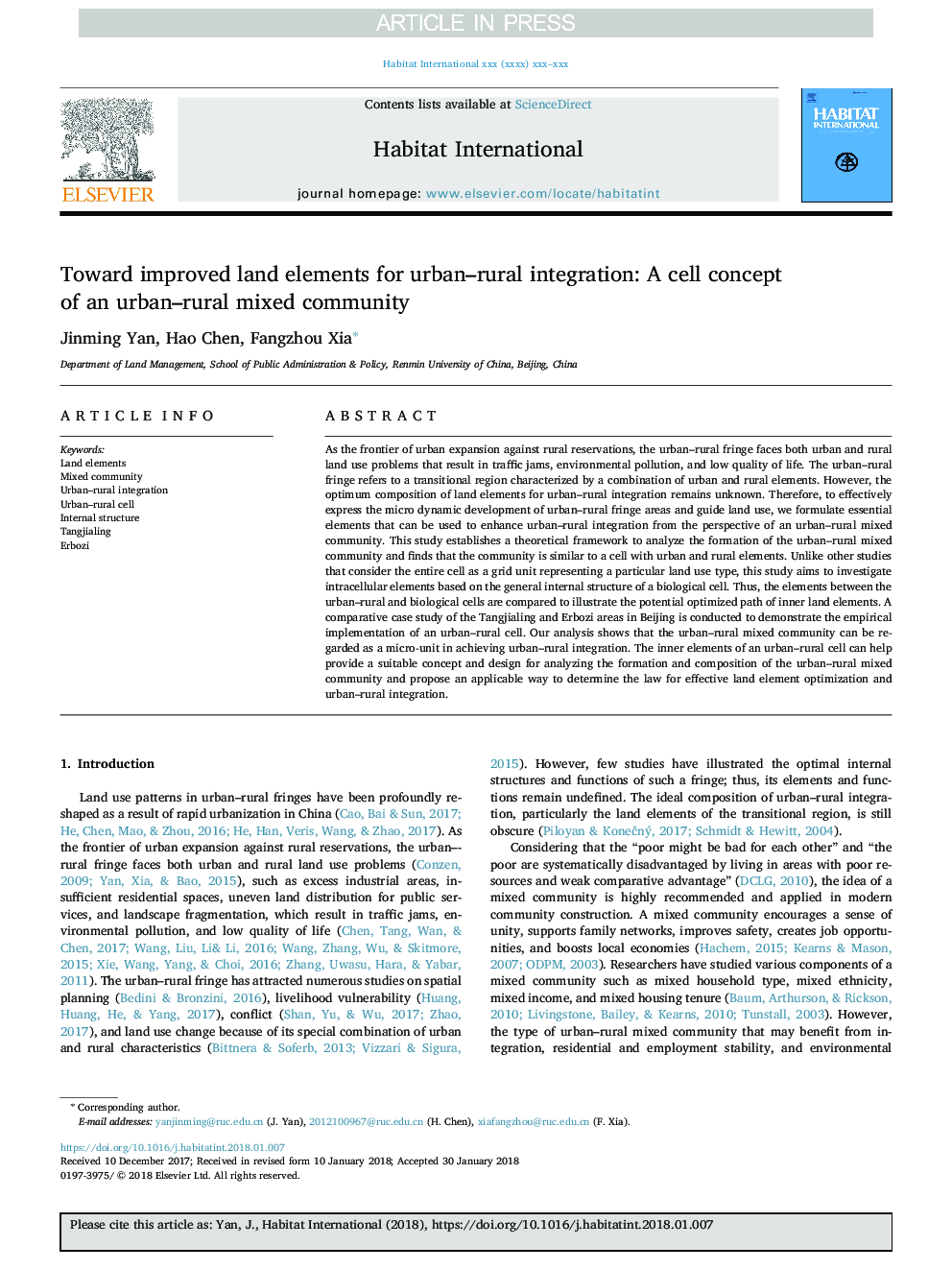| Article ID | Journal | Published Year | Pages | File Type |
|---|---|---|---|---|
| 7455001 | Habitat International | 2018 | 11 Pages |
Abstract
As the frontier of urban expansion against rural reservations, the urban-rural fringe faces both urban and rural land use problems that result in traffic jams, environmental pollution, and low quality of life. The urban-rural fringe refers to a transitional region characterized by a combination of urban and rural elements. However, the optimum composition of land elements for urban-rural integration remains unknown. Therefore, to effectively express the micro dynamic development of urban-rural fringe areas and guide land use, we formulate essential elements that can be used to enhance urban-rural integration from the perspective of an urban-rural mixed community. This study establishes a theoretical framework to analyze the formation of the urban-rural mixed community and finds that the community is similar to a cell with urban and rural elements. Unlike other studies that consider the entire cell as a grid unit representing a particular land use type, this study aims to investigate intracellular elements based on the general internal structure of a biological cell. Thus, the elements between the urban-rural and biological cells are compared to illustrate the potential optimized path of inner land elements. A comparative case study of the Tangjialing and Erbozi areas in Beijing is conducted to demonstrate the empirical implementation of an urban-rural cell. Our analysis shows that the urban-rural mixed community can be regarded as a micro-unit in achieving urban-rural integration. The inner elements of an urban-rural cell can help provide a suitable concept and design for analyzing the formation and composition of the urban-rural mixed community and propose an applicable way to determine the law for effective land element optimization and urban-rural integration.
Keywords
Related Topics
Social Sciences and Humanities
Social Sciences
Development
Authors
Jinming Yan, Hao Chen, Fangzhou Xia,
